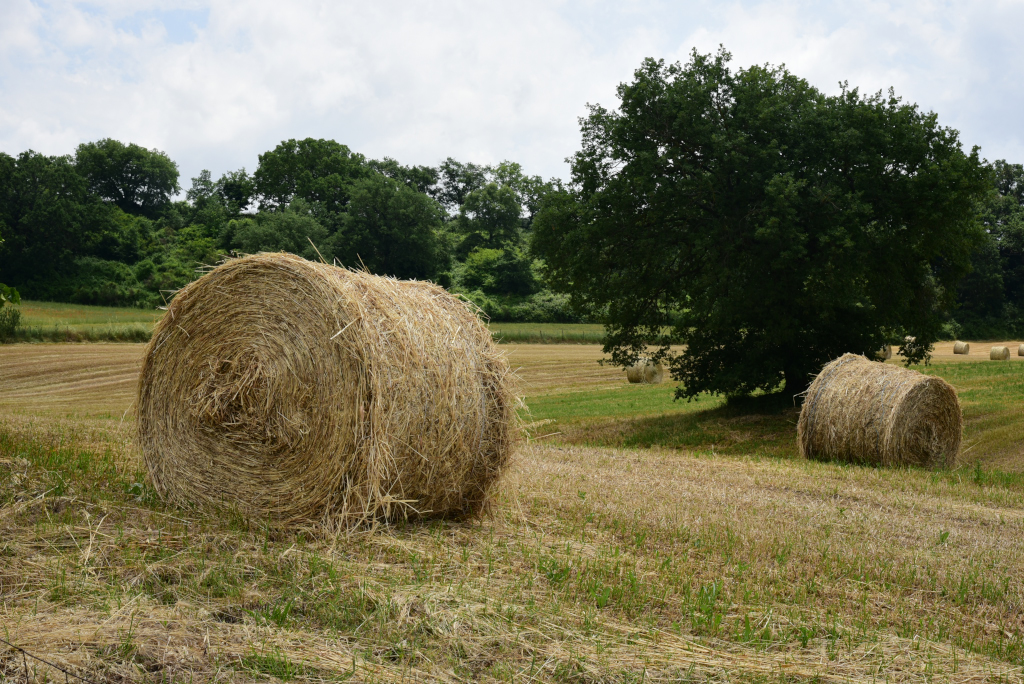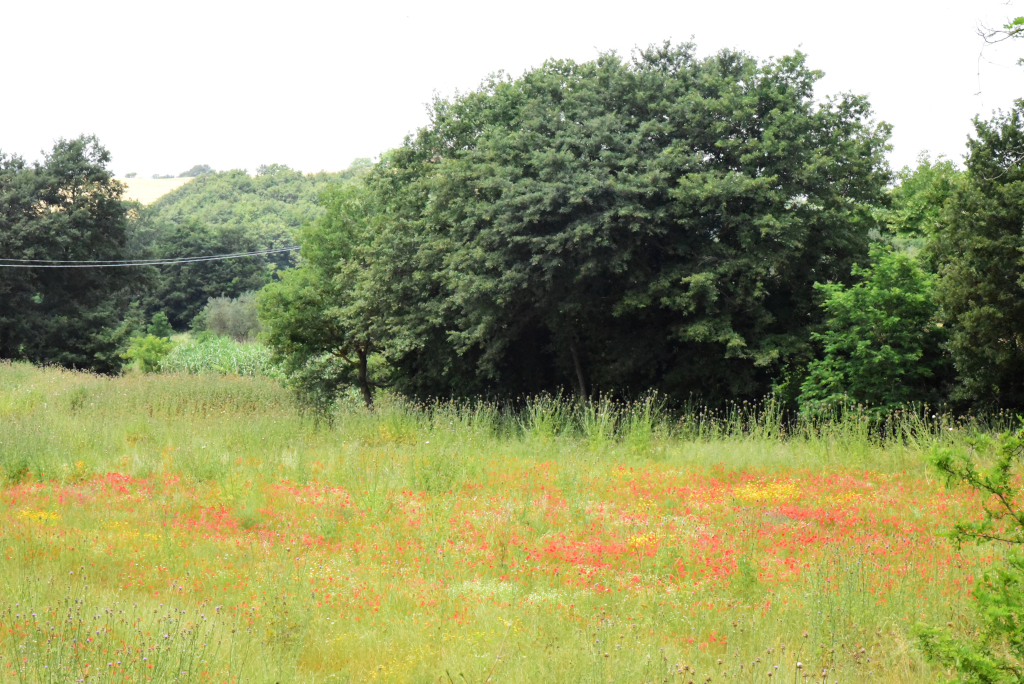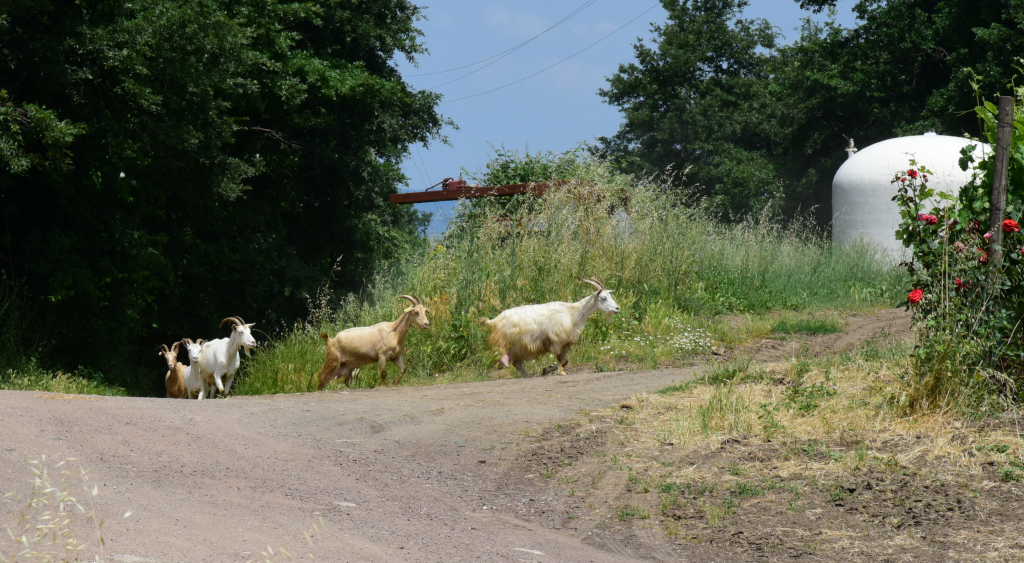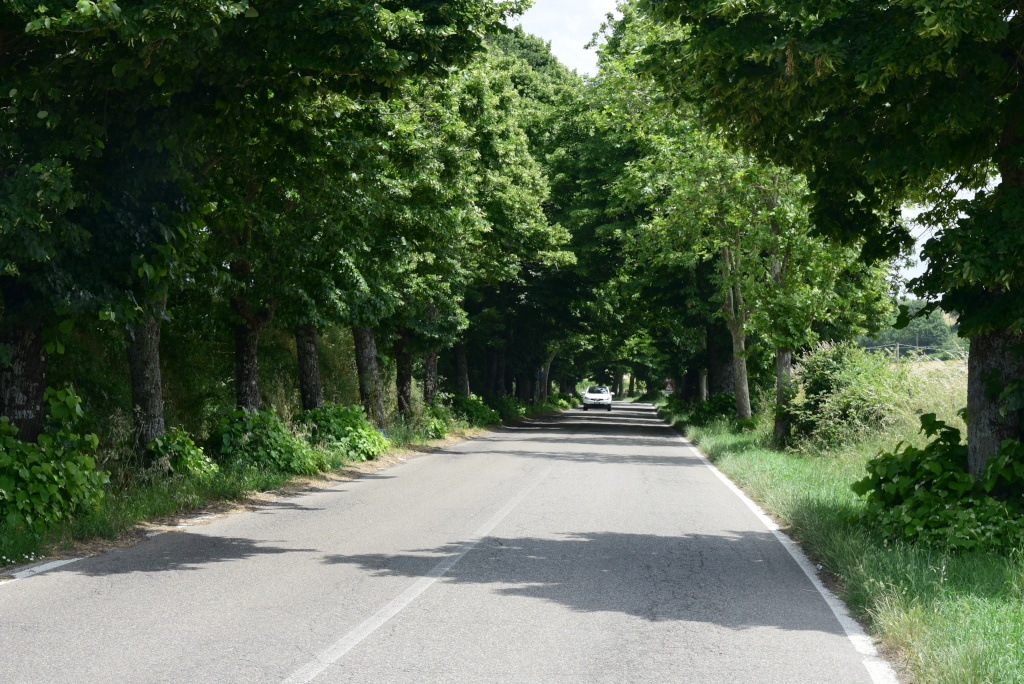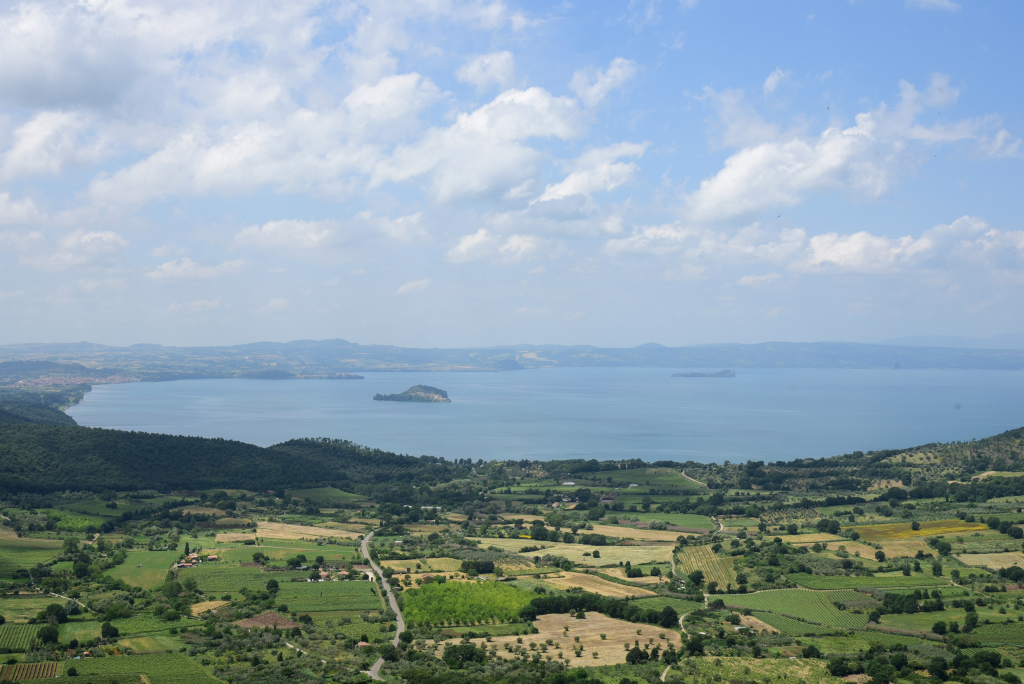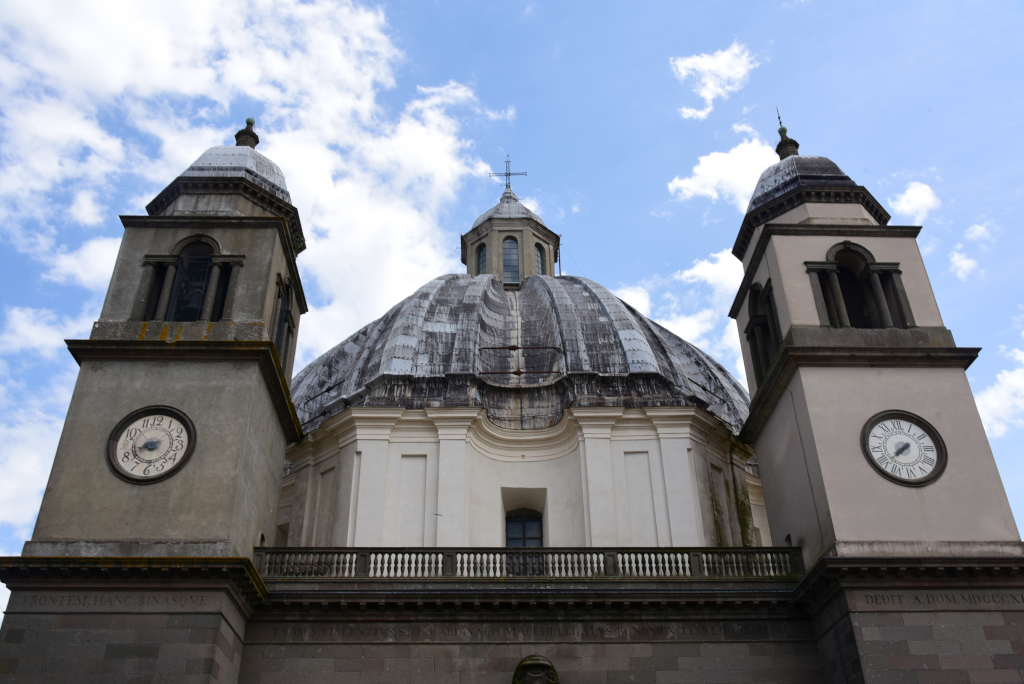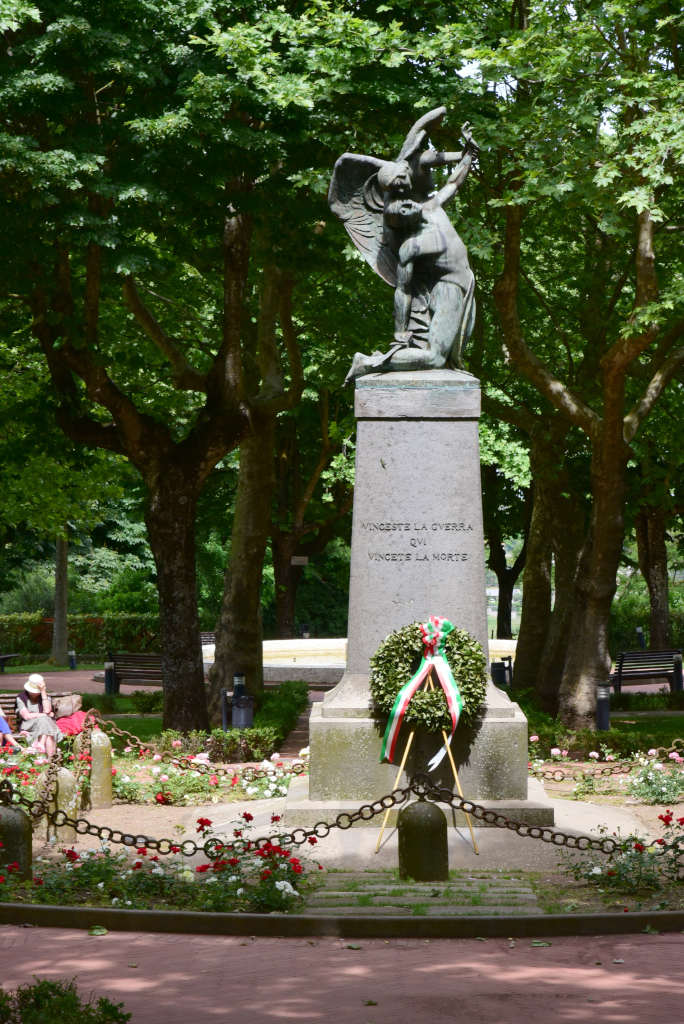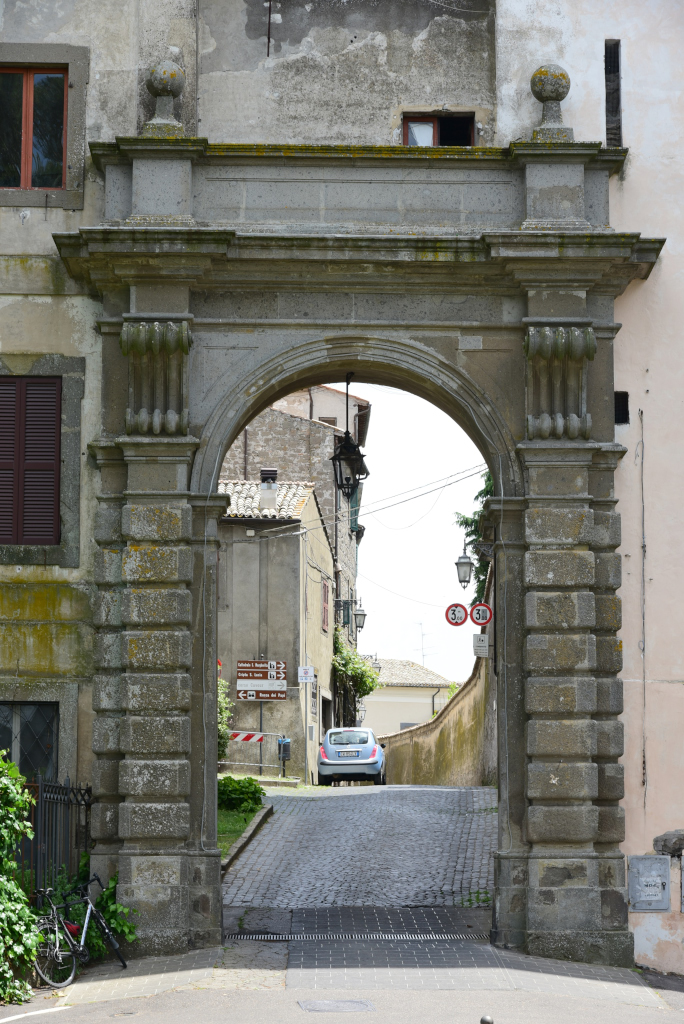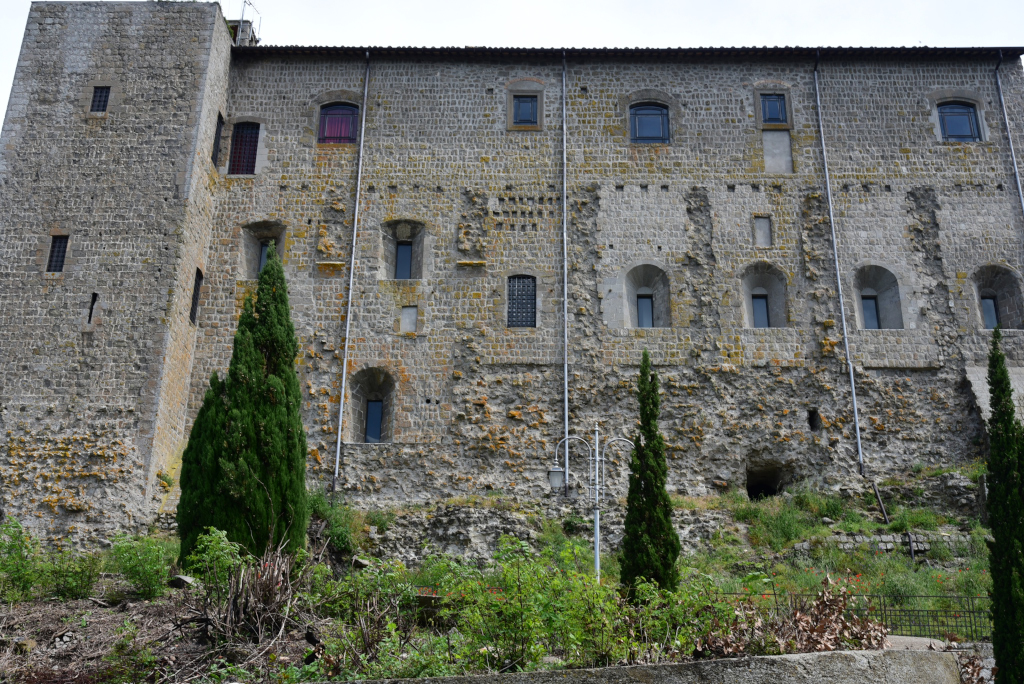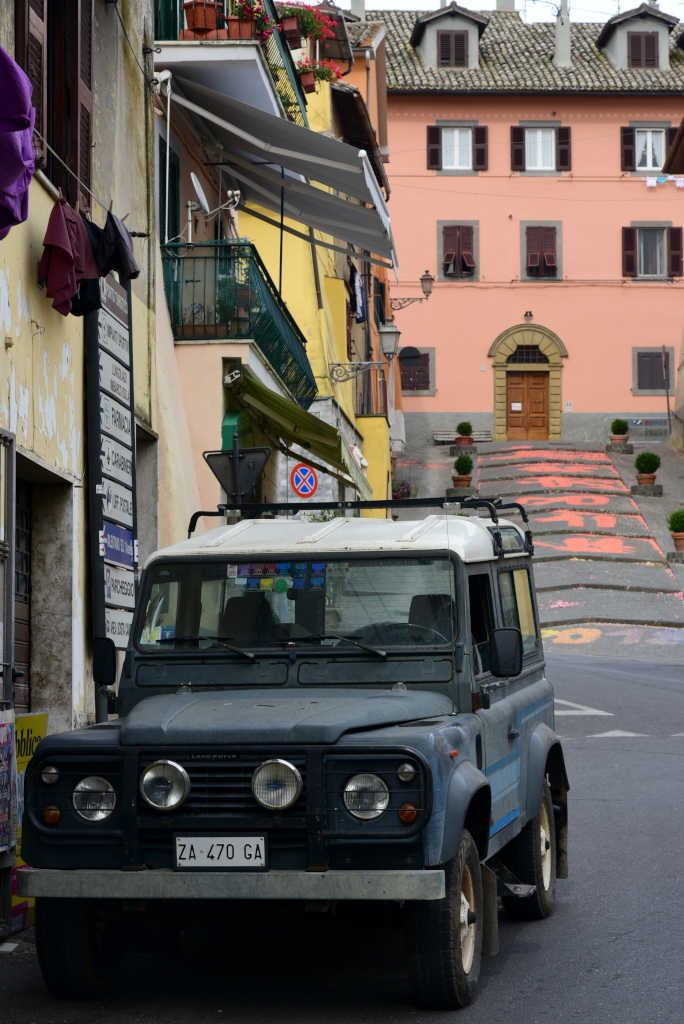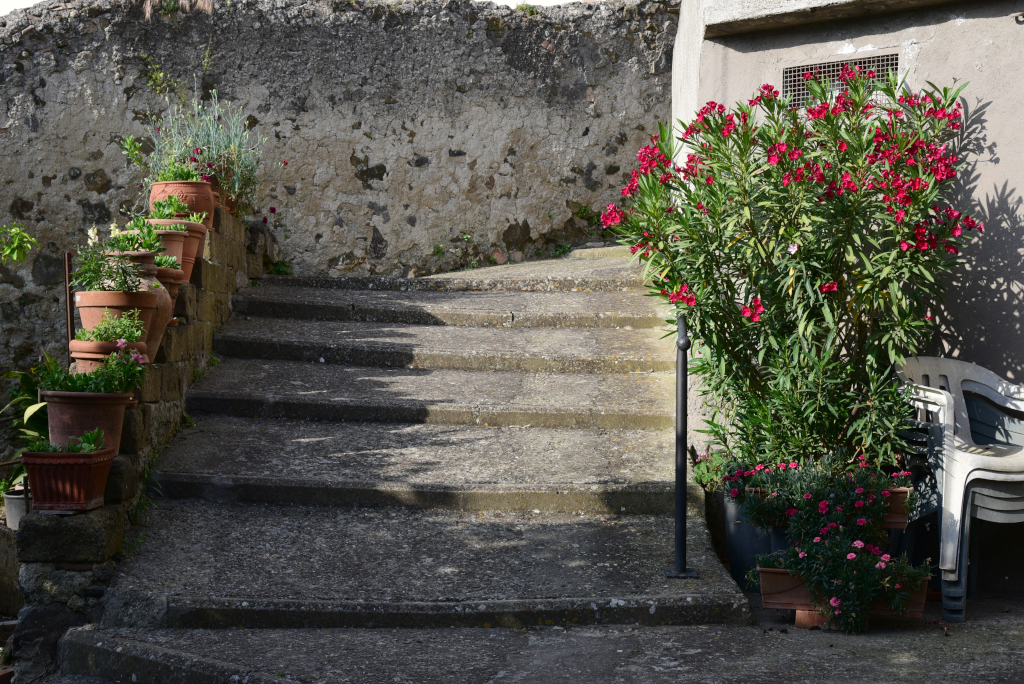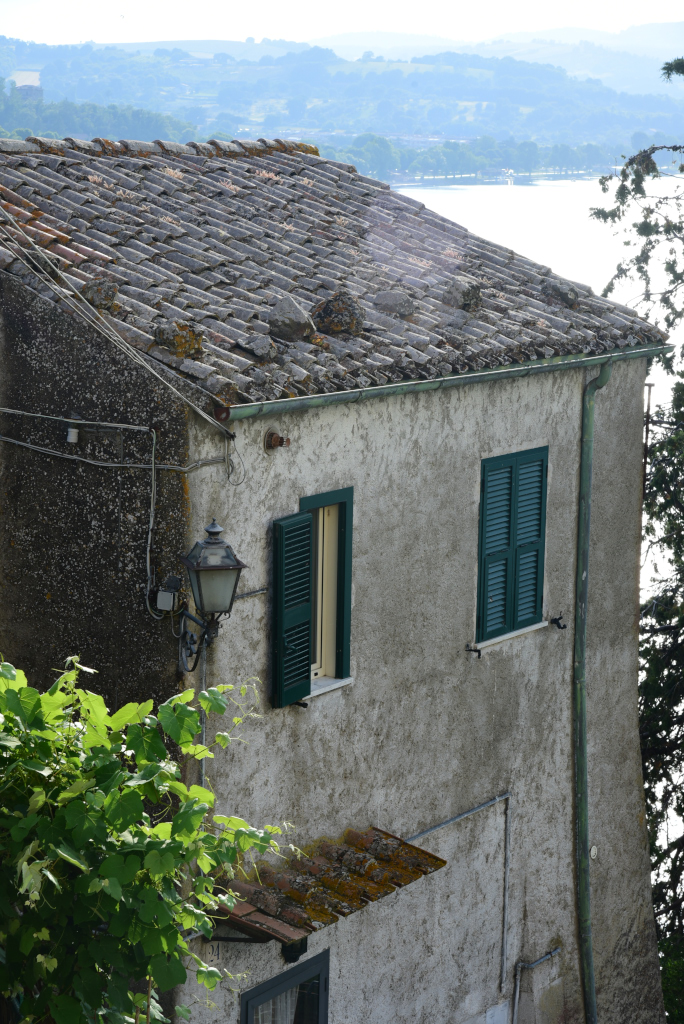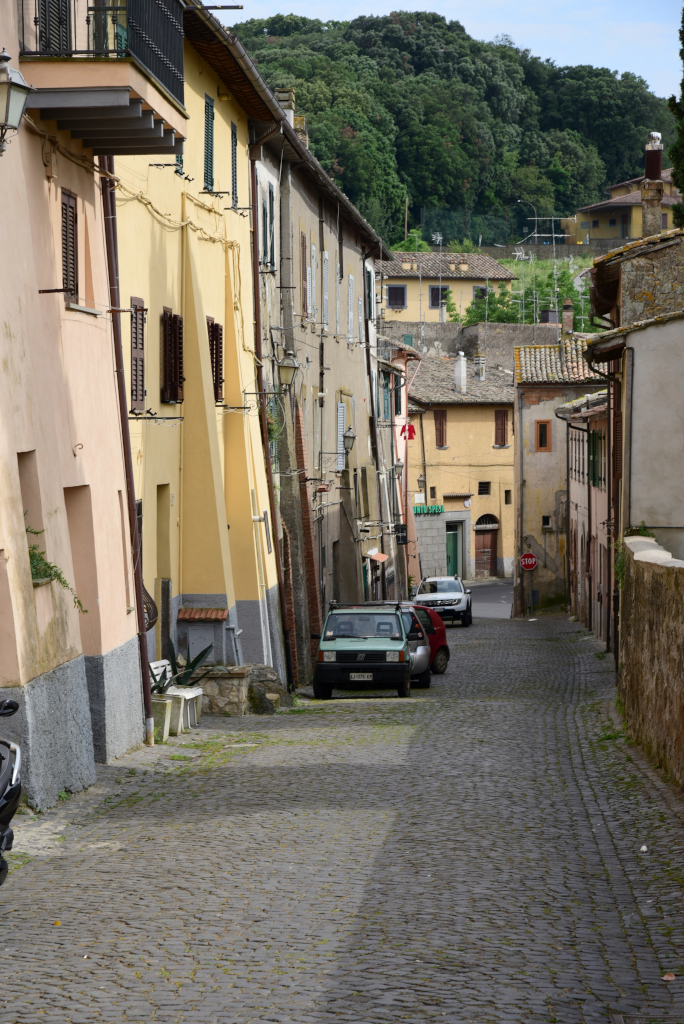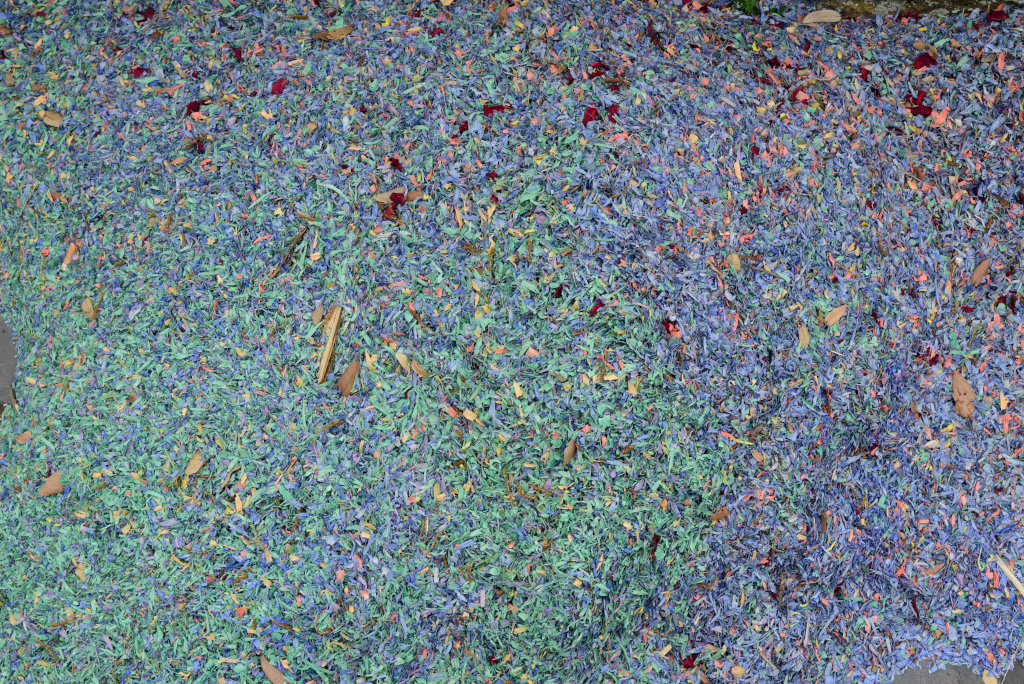June 4, 2018
The scenery along the southern shore of Lago di Bolsena running towards Montefiascone is spectacular.
The picturesque hill town of Montefiascone is located at an elevation of 590 metres and stands on top of the highest hill of the Volsini Mountains, dominating the south-eastern shore of Lake Bolsena, 17 km northwest of Viterbo.
The area of the town dates back to the Falisci people, then later the Etruscans. Apparently the town was the site of a temple at which the representatives of the twelve chief cities of Etruria met prior to being absorbed into Rome.
Documents dating from 853 A.D. indicate that Montefiascone belonged to the bishop of Tuscania in the early Middle Ages. The importance of the town at the height of the Middle Ages is illustrated by visits of Popes Stephen IX and Gregory VII in the 11th century and Frederick Barbarossa in 1185.
Montefiascone was often residence of Popes, and during Avignon Papacy, the main residence of the Papal legate Cardinal Albornoz, although by the mid-17th century the town was in decline, then became part of the new Kingdom of Italy in 1870.
The town is noted for the Est! Est !! Est !!! wine as well as its extra virgin olive oil. As with all the towns based on Lago di Bolsena, the local cuisine is rich is fish originating from the lake.
Capodimonte is a small resort set on the southern shore of Lago di Bolsena. The town rises to an elevation of 334 metres on a small scenic peninsula on the south-western shore of Lake Bolsena.
The old city is clustered around the imposing sixteenth-century octagonal-shaped Rocca Farnese castle, set on a hill overlooking a protected bay. The town’s sandy beach arcs away from the old town, the adjacent waters thick with the bristling spires of sailboats.
Capodimonte is the heir of the ancient Etruscan Vesentum, whose vast necropolis contained treasures of the Neolithic, Villanovan, Etruscan and Roman ages. Destroyed in 280 BC, the Roman Visentium was refounded and soon became a diocese since the early days of Christianity. Destroyed again by the Langobards in the middle of the VIII century, the town’s population dispersed.
The modern era town of Capodimonte fell into the hands of the lords of Bisenzio in the eleventh century, the Municipality of Orvieto in the thirteenth, the Vescovile di Montefiascone headquarters in 1369, controlled by the Duchy of Castro in 1385, then the Church from 1649 until the advent of the Kingdom of Italy in 1870.
And lastly, a return to the town of Marta.
(Narrative excerpted from Wikipedia as well as www.lagodibolsena.org)



